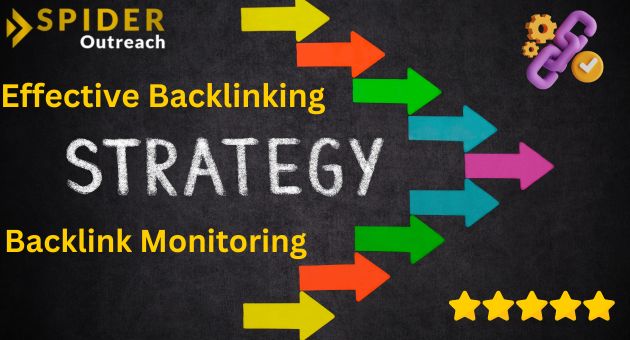Backlink Monitoring are one of the most critical components of search engine optimization (SEO), playing a vital role in how search engines perceive the authority and relevance of a website. Effective backlinking strategies can significantly enhance a site’s visibility, driving more traffic and boosting search engine rankings. However, building a strong backlink profile is not just about acquiring links; it also involves regular monitoring to ensure the quality and effectiveness of those links. This guide delves into the best practices for creating powerful backlinking strategies and highlights the importance of ongoing backlink monitoring. By mastering these techniques, businesses can improve their online presence, maintain a competitive edge, and secure long-term success in the digital landscape.
1.Understanding Backlinking
What Are Backlinks?
Backlinks, also known as inbound links, are hyperlinks from external websites that point to your site. They act as endorsements, signaling to search engines the credibility and relevance of your content, which can result in higher rankings in search results.
The Importance of Backlinks in SEO
Backlinks are a key component of SEO, serving as votes of confidence from other websites. They not only drive referral traffic but also indicate to search engines that your website is authoritative, relevant, and trustworthy.
Types of Backlinks
Knowing the different types of backlinks is essential for effective link-building. Dofollow links pass link equity, enhancing SEO, while nofollow links instruct search engines not to follow the link for ranking purposes.
2. Effective Backlinking Strategies
Creating High-Quality Content
High-quality, compelling content is the foundation of a successful backlinking strategy. By producing valuable, shareable content, you increase the chances of earning natural backlinks from authoritative sites.
- Content Creation Best Practices: Focus on keyword research, content formatting, and storytelling techniques to create engaging content that resonates with your audience.
- Content Promotion Strategies: Use social media marketing, influencer outreach, and email marketing to amplify your content’s reach and attract backlinks from relevant websites.
Outreach and Relationship Building
Building relationships through strategic outreach is crucial for acquiring backlinks from influential websites and industry leaders.
- Personalized Outreach Campaigns: Create personalized outreach emails that offer value to potential link partners, showcasing your expertise and building mutually beneficial relationships.
Guest Blogging and Content Syndication
Guest blogging and content syndication are effective ways to expand your reach and earn backlinks from reputable websites.
- Guest Blogging Guidelines: Choose reputable websites, create unique and relevant content, and include natural backlinks in your posts.
Directory and Resource Link Building
Using directories and resource link building helps diversify your backlink profile and boosts your website’s visibility in search results.
- Directory Submission Best Practices: Identify and submit to reputable directories relevant to your industry, while avoiding spammy directories.
Competitor Backlink Analysis
Analyzing competitors’ backlink profiles provides insights into potential link-building opportunities and helps refine your own strategy.
- Competitive Analysis Tools: Use tools to identify top competitors, analyze their backlinks, and uncover new link-building opportunities.
3. Backlink Monitoring
Monitoring Backlink Quality
Regularly monitoring your backlinks’ quality is essential for maintaining a healthy profile and avoiding penalties.
- Toxic Link Identification: Use tools like Google Search Console, Ahrefs, or Moz to find toxic backlinks and take action to disavow or remove them.
Tracking Backlink Growth
Monitoring backlink growth helps evaluate the effectiveness of your strategies and identify areas for improvement.
- Backlink Growth Analysis: Analyze trends in backlink acquisition to measure the impact of your link-building efforts on search rankings.
Identifying Lost Backlinks
Keeping track of lost backlinks allows you to address link erosion and maintain a strong backlink profile.
- Backlink Recovery Strategies: Reach out to webmasters, update broken links, or create new content to recover lost backlinks and maintain SEO authority.
Analyzing Anchor Text Distribution
Examining anchor text distribution ensures a natural and varied link profile that aligns with your keywords.
- Anchor Text Optimization Tips: Use a mix of branded and non-branded keywords in your anchor text to enhance the relevance and authority of your backlinks.
Leveraging Backlink Monitoring Tools
Utilize advanced tools like Ahrefs, SEMrush, or Moz to automate backlink monitoring and gain insights into your backlink profile.
- Tool Features and Benefits: Evaluate the features of leading tools, including backlink analysis, competitor research, and performance tracking, to find the best fit for your needs.
Conclusion
Effective backlinking and proactive backlink monitoring are vital for a successful SEO strategy. By implementing these strategies and using the right tools, you can boost your website’s visibility, authority, and search engine rankings, setting the stage for long-term success in the digital marketplace.

